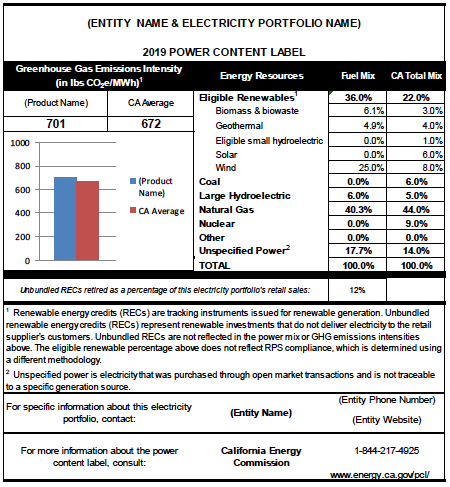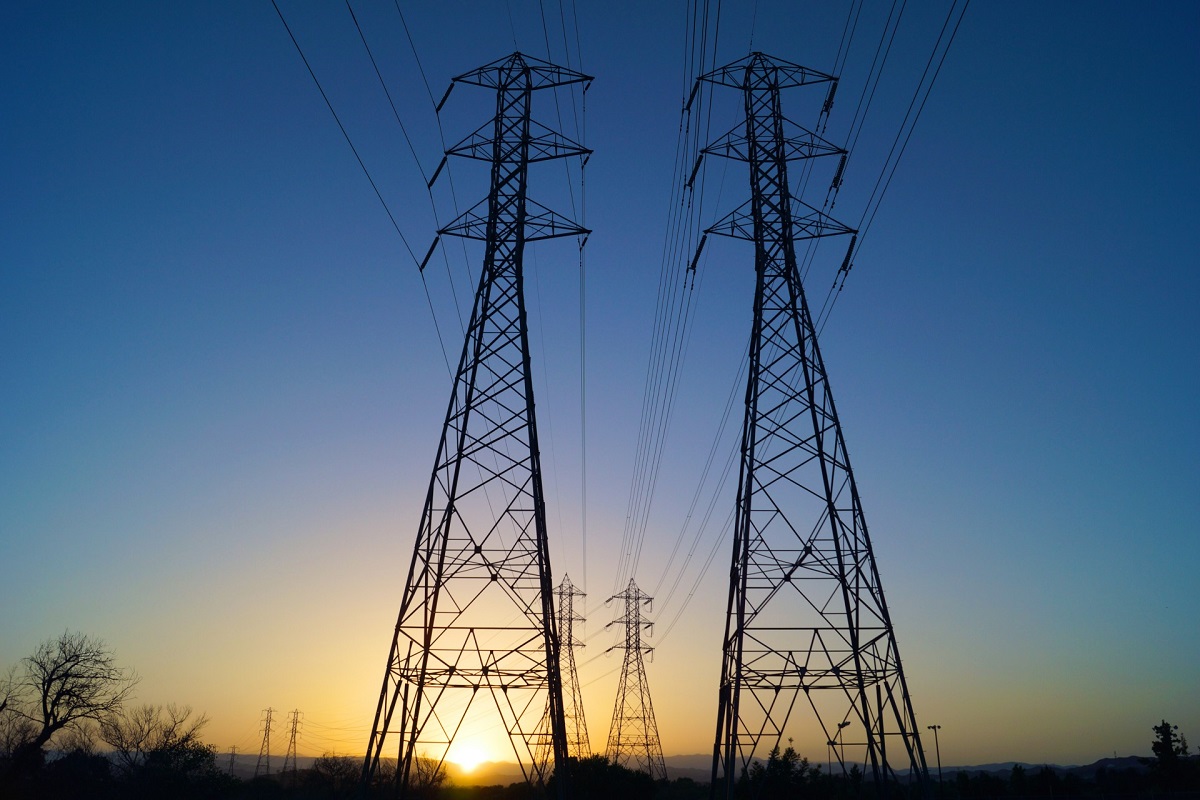Most people spend about eight minutes every year interacting with their electricity provider, so those scarce minutes need to count. Thanks to a recent decision from the California Energy Commission, some part of that tiny sliver of time will probably be directed to understanding the carbon footprint of their electricity.
Every October 1, California customers receive a Power Content Label by mail from their utility, community choice aggregator (CCA), or electric service provider. All of the labels are also available on the California Energy Commission’s website. The labels give a quick and easily digestible report on the power mix for their electricity, as well as a comparison to the overall California power mix. These labels have been a trusty guide to illustrate to customers information on how and where they get their power.
In 2016, the California legislature ordered that the label needed an upgrade: Companies needed to disclose the greenhouse gas emissions intensity of their power and whether they purchase unbundled renewable energy credits (RECs). Unbundled RECs are certificates that allow electricity providers to claim renewable attributes, but do not actually deliver renewable power to the California grid. In other words, unbundled RECs allow a provider to claim they are providing customers with renewable energy, when the actual electricity being delivered is from nonrenewable resources, like gas. The goal behind this legislation (A.B. 1110) was to provide consumers with clear, reliable, and accurate information on where their electricity comes from and its climate impacts.
Californians are serious about climate change, and marketing clean energy to California customers is big business. Even though the Power Content Label updates do not set any procurement mandates, electricity providers have a vested interest in persuading customers that their power mix is as clean as possible. In order to prevent greenwashing, the California Energy Commission set standards for how electricity providers can represent their emissions to customers.
Electricity providers have a plethora of resources and energy products available to purchase in order to build an energy portfolio. They can own the resource, buy scheduled energy from other utilities or third parties, or contract for specific “attributes” of faraway renewables while closer, dirtier fuels actually deliver electrons to the California grid. But not all of this energy is created equal. The California Energy Commission was tasked with ensuring that the updated Power Content Label reflects the actual emissions associated with the California grid. The recently approved regulations do just that.
Under the rules for the new label, electricity providers must report on the emissions associated with the power actually provided to the California grid. Renewable, zero-emissions resources that deliver energy to the California grid will reflect no greenhouse gas emissions. Electricity providers will also have to disclose how much of their fuel mix is made up of unbundled RECs—certificates that allow providers to claim renewable attributes when they are actually delivering dirty power to the California grid.

Image Source: California Energy Commission
The shiny, new Power Content Labels with greenhouse-gas intensities will arrive in 2021 and reflect all of the power purchases that your electricity provider makes in 2020. We look forward to seeing electricity providers make direct investments in zero-emitting resources to get their reported GHG intensities lower and to win over the hearts (and wallets) of their customers in the process.
